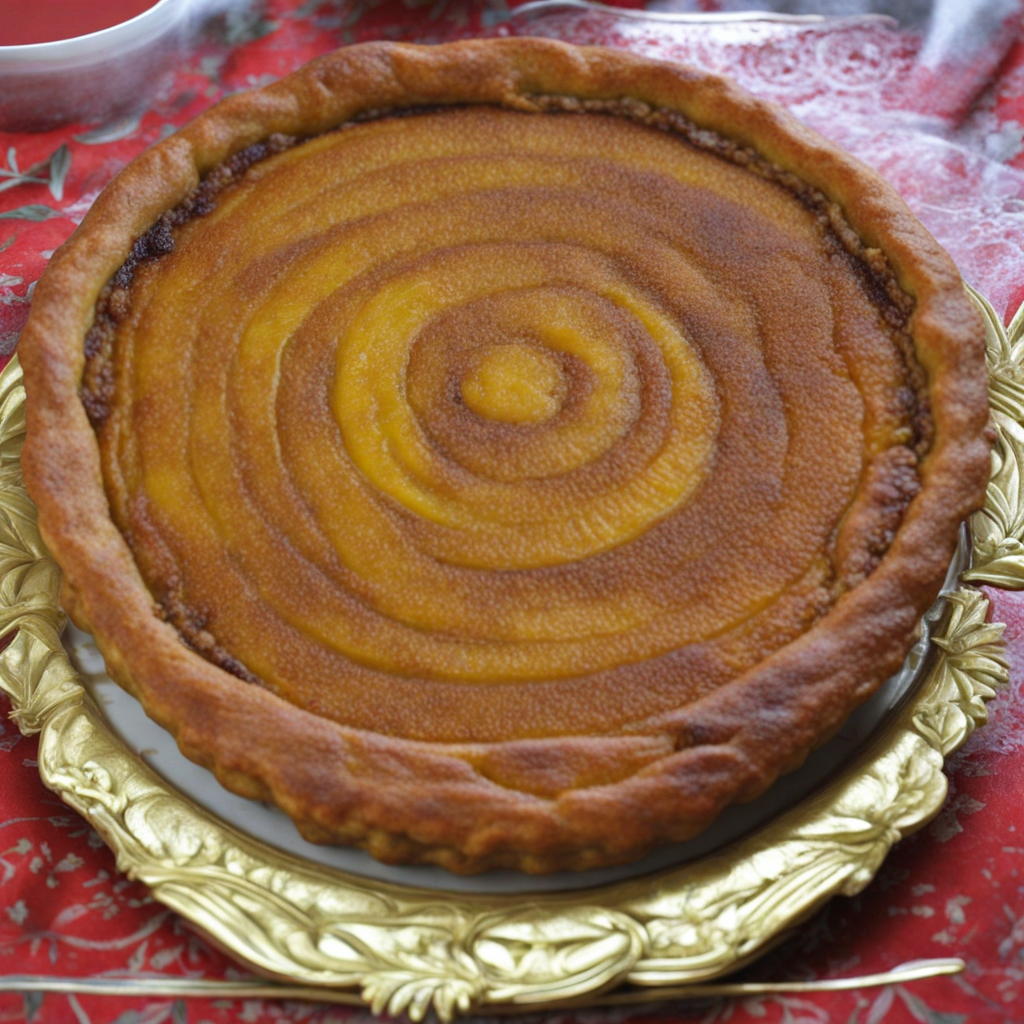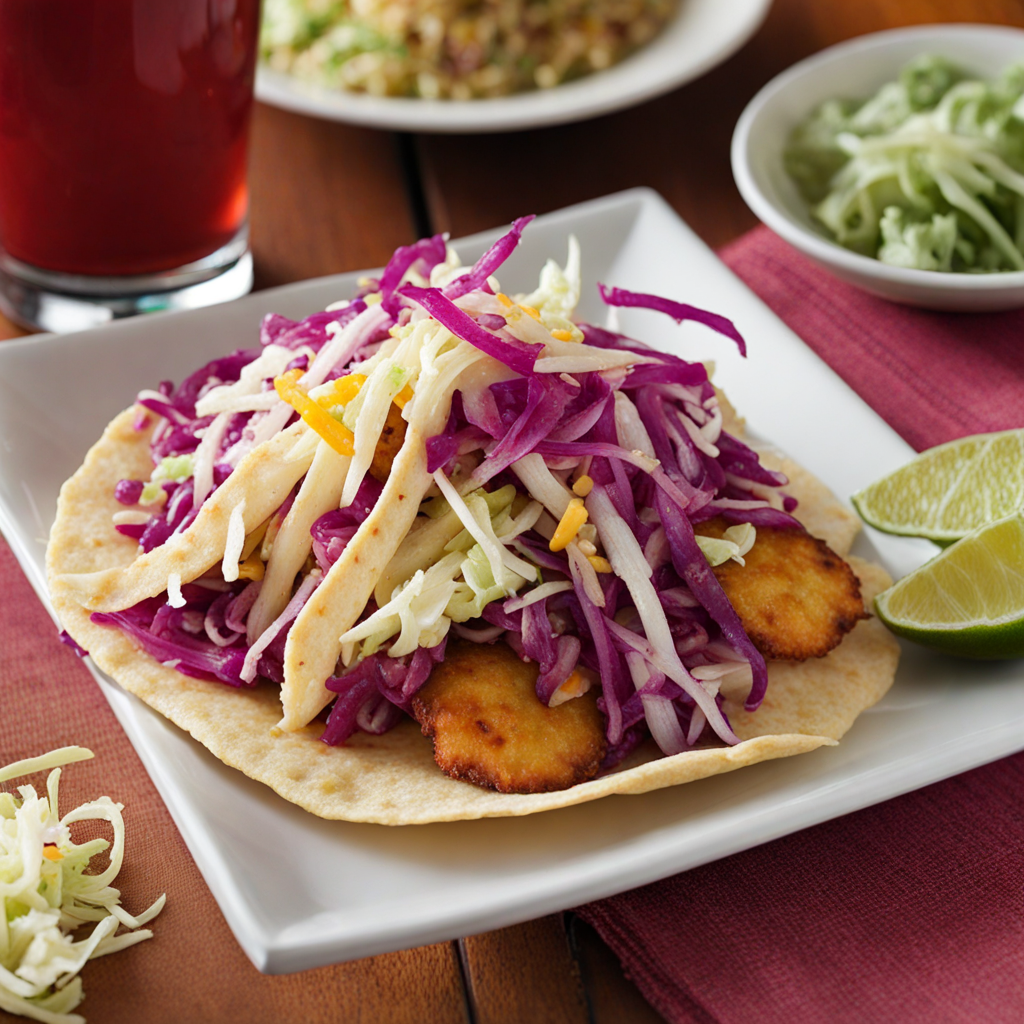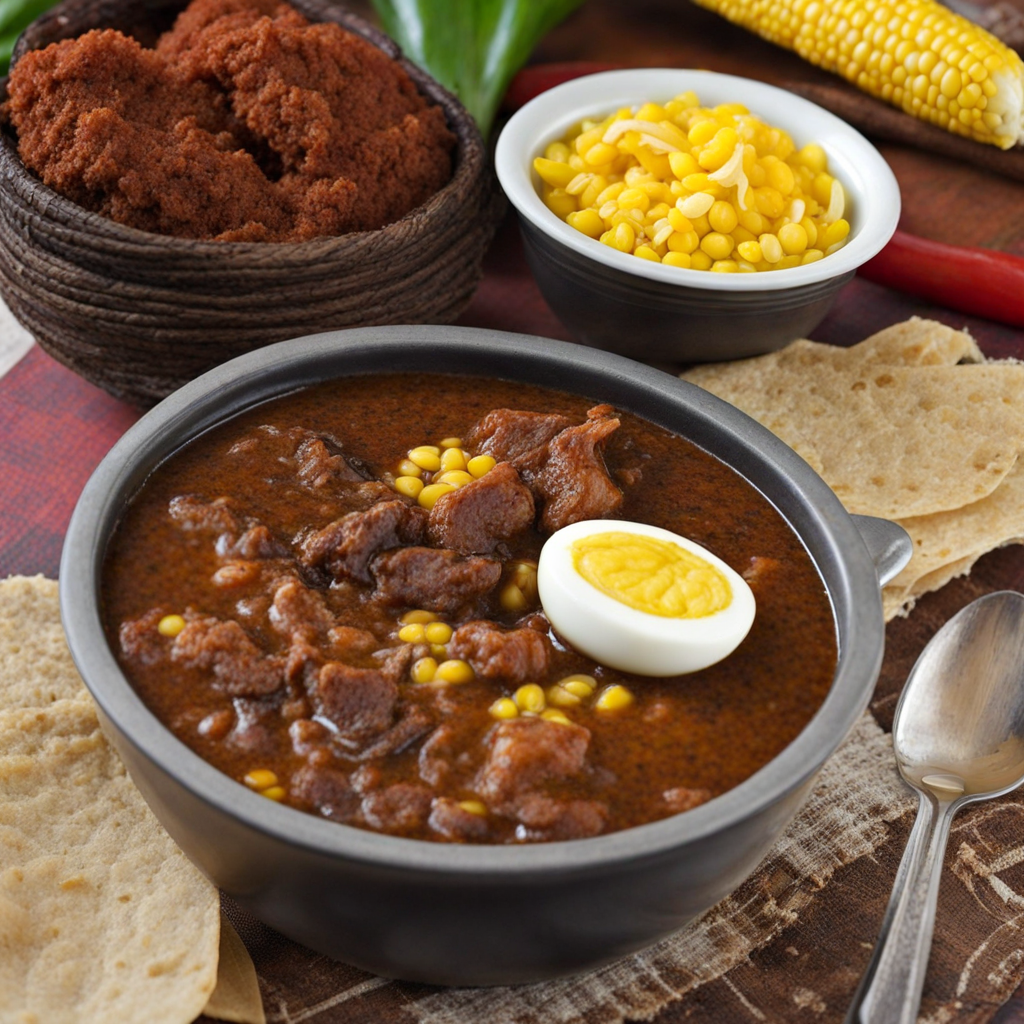Plantain Tart
Plantain Tart is a delightful Belizean dessert that showcases the unique flavors and textures of ripe plantains, a staple ingredient in Central American cuisine. The dish begins with the use of sweet, fully ripened plantains, which are mashed to create a smooth, caramel-like base. This base is then combined with spices such as cinnamon and nutmeg, enhancing the natural sweetness and offering a warm, fragrant aroma that is both comforting and inviting. The use of coconut milk adds a creamy richness, making the tart a true island treat that captures the essence of Belize's tropical climate. The tart is typically baked in a flaky, buttery crust that contrasts beautifully with the soft, sweet filling. The crust is often made using traditional ingredients, ensuring a homemade feel that resonates with the heart of Belizean cooking. As it bakes, the tart develops a golden-brown top, while the plantain filling bubbles slightly, creating a beautiful visual appeal. The combination of textures—the crispy crust and the velvety filling—creates a harmonious balance that is both satisfying and indulgent. When served, Plantain Tart can be enjoyed warm or chilled, often accompanied by a scoop of vanilla ice cream or a dollop of whipped cream for added decadence. Each bite offers a sweet and slightly tropical flavor, with the plantains providing a unique twist that sets it apart from more conventional desserts. This delightful treat not only reflects the rich culinary heritage of Belize but also invites food lovers to explore the lesser-known yet utterly delicious world of plantain-based desserts.
How It Became This Dish
The History of Plantain Tart in Belize #### Origins: The Genesis of Plantain Tart The Plantain Tart, a cherished dish in Belizean cuisine, has its roots deeply embedded in the diverse cultural tapestry of the region. To understand the origins of this unique dessert, one must consider the history of plantains themselves. Plantains, a starchy cousin of the banana, were cultivated in Southeast Asia and brought to the Caribbean by early explorers and traders. By the time the Spanish colonizers arrived in Central America in the 16th century, plantains had already become an essential staple in the diet of indigenous peoples, particularly the Maya. In Belize, the plantain is more than just a food item; it symbolizes sustenance and resilience. The versatility of plantains allowed them to be prepared in various forms, from savory to sweet, and they became a fundamental ingredient in many traditional dishes. The Plantain Tart likely emerged as a way to utilize overripe plantains that were abundant in local markets. The tart itself is a fusion of indigenous cooking practices and the influences of European colonialism, particularly the British, who settled in Belize in the 18th century. #### Cultural Significance: A Dish of Community and Celebration The Plantain Tart is not just a delightful treat; it represents the cultural identity of Belize. The dish is typically made with a crust that can be a simple pastry or a more elaborate dough, filled with mashed ripe plantains, sugar, spices, and sometimes coconut or nuts. Each family may have its own variation, often passed down through generations, making the tart a symbol of familial love and tradition. In Belizean culture, food plays a crucial role in community gatherings, celebrations, and festivals. The Plantain Tart often makes an appearance during holidays, birthdays, and social events, embodying a sense of togetherness. The act of preparing and sharing the tart fosters connections among family members and friends, strengthening communal bonds. Moreover, the sweet, comforting flavors of the Plantain Tart evoke memories of home for many Belizeans, whether they are residents or expatriates. The dish serves as a nostalgic reminder of childhood, family gatherings, and the rich culinary heritage of Belize. #### Development Over Time: Evolution and Adaptation As Belizean society evolved, so too did the Plantain Tart. The 20th century marked a significant shift in Belize’s culinary landscape. With increased globalization and the movement of people, various culinary influences began to permeate traditional cooking. The Plantain Tart adapted to these changes, incorporating ingredients and techniques from other cultures. While the traditional preparation of the tart remains popular, contemporary chefs and home cooks have begun experimenting with the recipe. Some variations incorporate modern elements such as chocolate, rum, or even a fusion with other desserts, like cheesecakes. The use of different spices and flavorings reflects Belize’s multicultural population, which includes Creole, Garifuna, Maya, and Mestizo communities. As these groups continue to interweave their culinary practices, the Plantain Tart remains a canvas for creativity and innovation. The tart's association with local markets is another aspect of its evolution. In recent years, there has been a resurgence of interest in local, sustainable ingredients. Many Belizeans are returning to traditional cooking methods and sourcing ingredients from local farmers. This movement has revitalized interest in the Plantain Tart, with many chefs emphasizing the importance of using fresh, locally grown plantains. The tart, therefore, has not only become a symbol of nostalgia but also a representation of sustainable culinary practices in Belize. #### Modern Interpretations: A Global Perspective Today, the Plantain Tart is gaining recognition beyond Belizean borders. As Belizean cuisine grows in popularity, particularly among food enthusiasts and travelers, the tart has started appearing on international menus and food festivals. Chefs around the world are intrigued by its unique flavor profile and the story behind it. In this global context, the Plantain Tart is often celebrated for its health benefits as well. Plantains are rich in vitamins A, C, and B6, as well as potassium and dietary fiber. This nutritional value, combined with the growing trend of plant-based diets, has contributed to the tart's newfound appeal among health-conscious consumers. Food bloggers and social media influencers have also played a pivotal role in popularizing the Plantain Tart. With the rise of platforms like Instagram and TikTok, visually appealing dishes can quickly gain traction, and the Plantain Tart, with its vibrant yellow color and inviting presentation, fits the bill perfectly. The dish has become a symbol of Belizean culinary pride, celebrated not only for its taste but also for its cultural significance. #### Conclusion: The Enduring Legacy of Plantain Tart The Plantain Tart is more than just a dessert; it is a profound expression of Belizean identity, history, and community. From its origins in the kitchens of indigenous peoples to its modern iterations in both local and international cuisines, the tart encapsulates the essence of Belizean culture. It stands as a testament to the resilience and adaptability of traditional foods in a rapidly changing world. As Belizeans continue to embrace their culinary heritage while welcoming new influences, the Plantain Tart will undoubtedly remain a beloved staple. It serves as a bridge between generations, connecting the past with the present and ensuring that the flavors of Belize remain vibrant and relevant for years to come. Whether enjoyed during a family gathering, a community festival, or a quiet evening at home, the Plantain Tart is a delightful reminder of the rich history and cultural significance that food holds in our lives.
You may like
Discover local flavors from Belize







